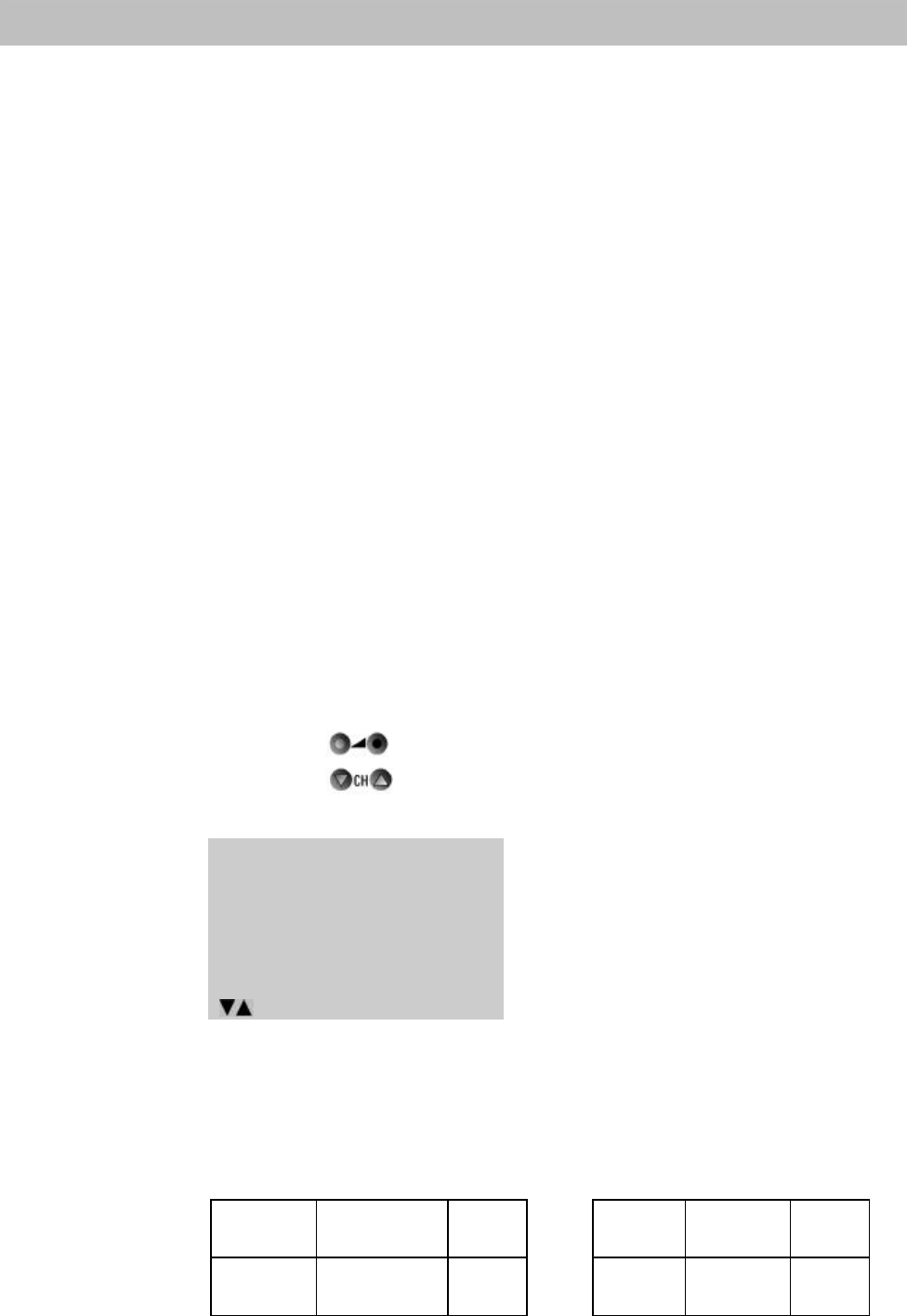
Basic Setting-up
24
DiSEqC-Signal (Digital Satellite Equipment Control)
Different control signals are required when selecting satellite signals.
Up until now the14/18V LNB supply-voltage and the 22 kHz. signal (which is over-
ridden by the LNB feed-voltage) was sufficient for the majority of application-traps
to select the signals.
With these 4 control-criterions you can switch between the horizontally and verti-
cally polarised signals as well as between 2 satellites (multi-feed reception).
With the expansion of the frequency ranges into the 12 GHz band (high-band
range 11.70 - 12.75 GHz) or for the reception of more than two satellites additional
control-criterions are required for the LNB-drive and signal selection.
Eutelsat together with Philips have developed the ”DiSEqC”-control-signal.
The ”DiSEqC” control-signal applies a special modulation (pulse-widening modula-
tion) to the existing 22 kHz. signals.
You must distinguish between:
• DiSEqC Tone Burst
(described as Simple DiSEqC or Easy DiSEqC)
• DiSEqC 1.0
• DiSEqC 2.0
The UFD 346 receiver uses both Tone Burst Signal and DiSEqC 1.0. Which one is
required depends upon the components in your reception-system.
DiSEqC Menu Settings
• Call-up the basic setting-up menu (see section, ”Calling-up the Basic Setting-up
menus”).
• Use these buttons to select the menu option ”DiSEqC menu . . .”.
• Use these buttons to select the sub-menu ”DiSEqC menu . . .”.
The following menu is then displayed ( default settings):
DiSEqC SETTINGS
>22KHz signal: Pos A/B
Tone Burst: OFF
DiSEqC: OFF
DiSEqC repeat: OFF
Remote freq.: 1000 MHz
0-9 VOL A/B STOR STBY
The status line at the bottom of the menu shows the buttons that you must use to
change the settings.
22 KHz Signal
This menu-option determines whether the 22 KHz signal can be switched between
a satellites upper and lower frequency bands (High/Low) or between 2 satellites
(Pos. A/B).
22 KHz
High/Low
Freq. Range
22 KHz
or 22 KHz
Pos. A/B
Orbital Pos.
22 KHz
Low
High
Off
On
1 and 3
2 and 4
Off
On
(Default settings)
See Video settings menu, menu-option: Polarity and Orbital Position


















